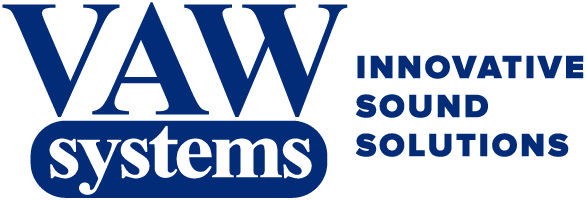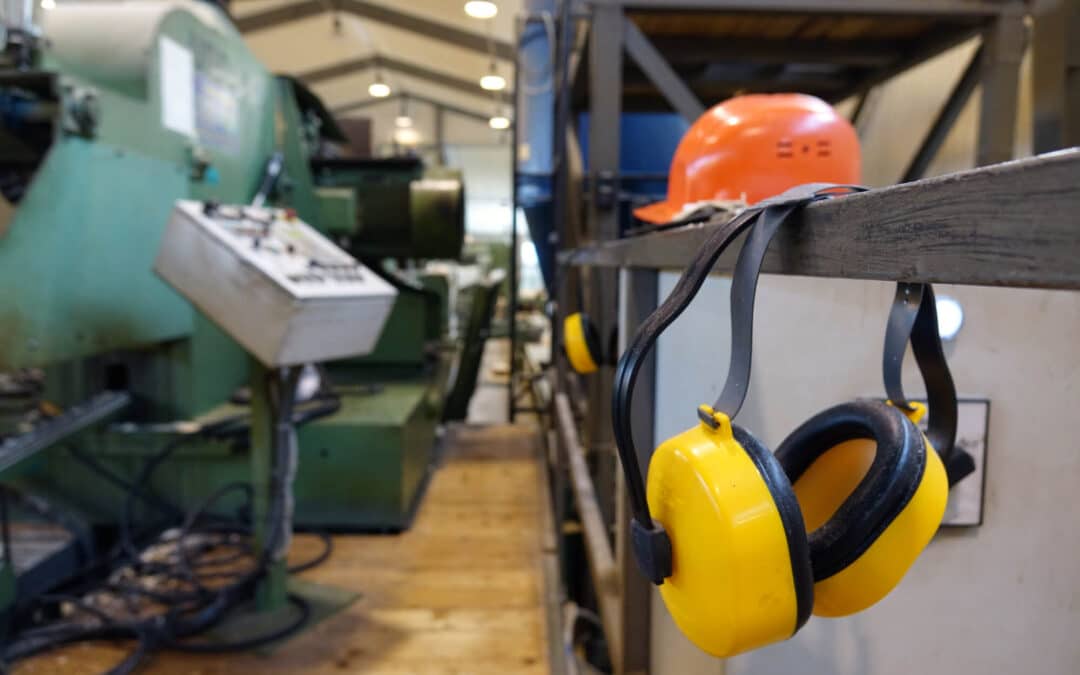Baghouse filters (sometimes shortened to bag filters) are dust and particulate filtration systems that are commonly used in industrial settings. Power plants, steel mills, chemical producers, and other manufacturing and industrial companies are the most common users of baghouse filters.
Companies use baghouse filters to comply with regulations, reduce their environmental impact, and protect the health of their employees.
There are several different ways in which baghouse filters can be constructed, but all of them share similarities. One such similarity is that baghouse filters invariably create noise—and in most cases, it’s enough noise to damage the hearing of workers or to violate noise ordinances. That’s where industrial plant noise control for baghouse filters comes into play.
To fully understand the use of industrial noise control devices for limiting the noise produced by baghouse filters, we will explore:
- How baghouse filters are constructed
- The different noise control solutions that can be used to reduce the sounds they produce
- How VAW Systems designs custom noise control solutions for baghouse filters
Core Insights
- Baghouse filters reduce the amount of dust and particulate in the air. They’re commonly used in industrial contexts—power plants, factories, and more.
- There are three basic types of baghouse filter—pulse-jet, reverse air, and shaker. Each has its own advantages and way of generating noise.
- Industrial plant noise control for baghouse filters is complex—a combination of maintenance, integrated noise suppression technology, and noise-reducing barriers can be used.
- Soundproofing baghouse filters helps preserve the health and hearing of workers; it also helps to comply with local noise ordinance by-laws
- There are two types of soundproofing available for baghouse filters: Silencers and noise barriers. Air inlet filter houses can be used in conjunction with baghouse filters to reduce noise and filter particulates.
- VAW Systems designs custom noise reduction solutions for baghouse filters.
How Baghouse Filters Work
There are three basic designs for baghouse filters:
- Pulse-jet
- Reverse air
- Shaker
Here’s how they work:
Pulse-jet filters
Pulse-jet filters are among the most common types of baghouse filters; they’re prized because they use no moving parts aside from the fans used to direct gas into the baghouse. The bags are supported by metal cages so that they don’t collapse during operation. Dirty gas enters the baghouse from the bottom, and dust is captured by the bag and filters; clean air then flows out the other side.
The pulse-jet baghouse is automatically cleaned by pulses of compressed air that blast in the opposite direction of the filtration. This causes the bag filter surfaces to flex, which breaks the dust cake and dislodges the dust that’s been filtered into a storage hopper.
Shaker baghouses
Mechanical-shaker baghouses are often used when compressed air cleaning is not an option. Tubular filter bags are suspended from horizontal beams; dirty gas enters from the bottom, passes through the fabric filter, and then clean air leaves from the top.
The shaker baghouse is cleaned by a motor-driven shaft which shakes the horizontal beam on which the bag is suspended. The dust and debris then fall into a dust collector at the bottom of the bag.
Reverse-air baghouses
In reverse air baghouses, the flow enters from the bottom of the bag; the filter bags are fastened on a hanger frame. Dust then collects on the inside of the bag, which is cleaned by injecting air in the opposite direction that filtration occurs. Pressure is introduced into the bag through this process, which causes it to flex; the dust cake formed on the sides of the filter bags then falls into the dust collector. These baghouses differ from pulse-jet filters in that they do not use bubbles of compressed air, and thus must be taken offline temporarily for their cleaning cycle.
What Is Industrial Plant Noise Control for Baghouse Filters?
Noise is an inevitable byproduct of using bag filters. The sources of noise will vary depending on the type of filter used, but they can include:
- The fans used to draw gas into the bag filters
- The mechanical shaking of a shaker baghouse
- The compressed air in a pulse-jet filter
Together, these sounds can lead to noise levels reaching 55-80 dB or higher, posing significant risks to the hearing of workers, as well as potentially causing noise disturbances and violating local by-laws. Noise control is used to mitigate the amount of noise emitted by baghouse filters.
There are several different ways to approach the problem; combining these approaches usually leads to the most economical and effective means of noise control for your baghouse system. Broadly, these approaches include:
- Regular maintenance—lubrication and ensuring proper alignment can reduce noise
- The use of noise mitigation products like noise barriers, silencers, and anti-vibration mounts in the production of the baghouse filter
- The use of sound-dampening enclosures to protect workers, or to limit the amount of noise that escapes the enclosure
All of these techniques are useful, but some have limitations. Regular maintenance is an excellent, low-cost way of decreasing noise, but it doesn’t have the decibel reduction of the other two methods. Sound enclosures, on the other hand, are usually a useful way of limiting noise, but they should typically not be used to fully enclose bag filters, as that might limit their effectiveness at dust collection and filtration.
This means that integrated noise mitigation products are typically best for baghouse filters—these products must be chosen carefully. A noise mitigation product that’s too thick may prevent some dust particles from entering into the fabric filters—and as dust collects on noise mitigation products, it may impact their overall lifespan and effectiveness.
The Importance of Soundproofing for Bag Filters
As mentioned above, soundproofing is essential for baghouses and filter bags—limiting the sound produced by these devices protects workers and helps companies comply with local by-laws. Additionally, the soundproofing must allow fine particles to enter into the fabric filters so they can fulfill their role in air pollution control.
This means that soundproofing products must typically be custom-built for the baghouse filter in question. Different filters will have different sizes, different rates of airflow, and different mechanics; you can imagine how noise suppression might differ between a shaker baghouse, a reverse-air baghouse, and a pulse-jet baghouse.
Finding a solution that allows flow so that the baghouse can continue to filter media from dusty air while still mitigating noise requires careful engineering.
Types of Soundproofing Solutions for Bag Filters
Silencers
Silencers are designed to absorb sound or diffuse sound—in some circumstances, they’ll do both. They’re typically sold to the OEMs of baghouse filters, or to companies looking to quiet their filters.
Silencers are particularly useful for pulse-jet and reverse-air filter bags. In the case of a pulse-jet, it can be installed on the compressed air intake lines—this is useful because it reduces the noise generated by the blasts of compressed air used to clean the system. The same basic principle applies to reverse-air filters; silencers can be used on the fan or blower that reverses the flow of air through the bag to clean it.
Additionally, silencers may be equipped on the fans that are used to draw air into any bag filter system, including shakers.
As will all soundproofing solutions, the silencers you choose must be custom-built to limit their interference with the baghouse filter’s ability to collect dust from the gas stream.
Noise Barriers
Unlike silencers, noise barriers are structures that are built around filter bags, instead of installed as a part of the baghouse. Like silencers, they reflect or absorb sound waves to reduce noise levels.
The key to designing noise barriers for baghouses is to ensure there’s still sufficient airflow—this means that the baghouse should typically not be fully enclosed by barriers. The main advantage of noise barriers is that they can be used for any baghouse systems blocking the direct path of the sound. With sufficient noise-reducing ventilation, a baghouse filter could, hypothetically, be fully enclosed, but this practice is somewhat rare.
Air Inlet Filter Houses
Air inlet filter houses are used to filter the air that enters into a system—they’re typically used near gas turbines and large industrial fans. For these reasons, they’re usually not used for baghouse filters—though the principles of incorporating sound-absorbing materials into fans that draw air into your baghouse are used in silencers.
Another way to use air inlet filter houses is in tandem with baghouse filters. By placing filters on inlet fans, noise can be reduced, and some particulates can be filtered. As a result, overall noise levels in your facility will be reduced, which helps protect workers and limits liability. From there, air will enter into the baghouse filtration system, which will more thoroughly filter particulates. When the baghouse has been sufficiently muted, the overall noise produced by your business will fall within acceptable noise levels.
How VAW Systems Can Help
VAW Systems offers customized noise suppression solutions for all kinds of devices, including baghouse filters. As a manufacturer, we produce silencers, noise barriers, and air inlet filter houses. OEMs typically purchase our silencers—they’re custom-fitted to bag filters before they are sold. Business owners who are concerned with the noise generated by their baghouses can also use our services—we customize silencers for baghouses with practically any environmental or size constraints you can imagine.
Our noise barriers are also customizable to help reduce or redirect the noise generated by baghouses. Additionally, we offer full acoustic enclosures—these can be used to protect control rooms, observation rooms, and other areas that are primarily occupied by workers from the noises produced by baghouse filters and other machinery.
Finally, our custom air inlet filter houses are an excellent choice for industrial fan systems. They reduce noise and help reduce airborne pollution. They can be used in tandem with baghouse filter silencing systems, and—like the rest of our line of products—they are fully customizable.
We can help you reduce the noise generated by your baghouse filters—and minimize the noise made by your industrial activities overall—with our selection of both blow-down and vent silencers. Get in touch with VAW Systems today—our engineers will help you devise the right solution for your company.

